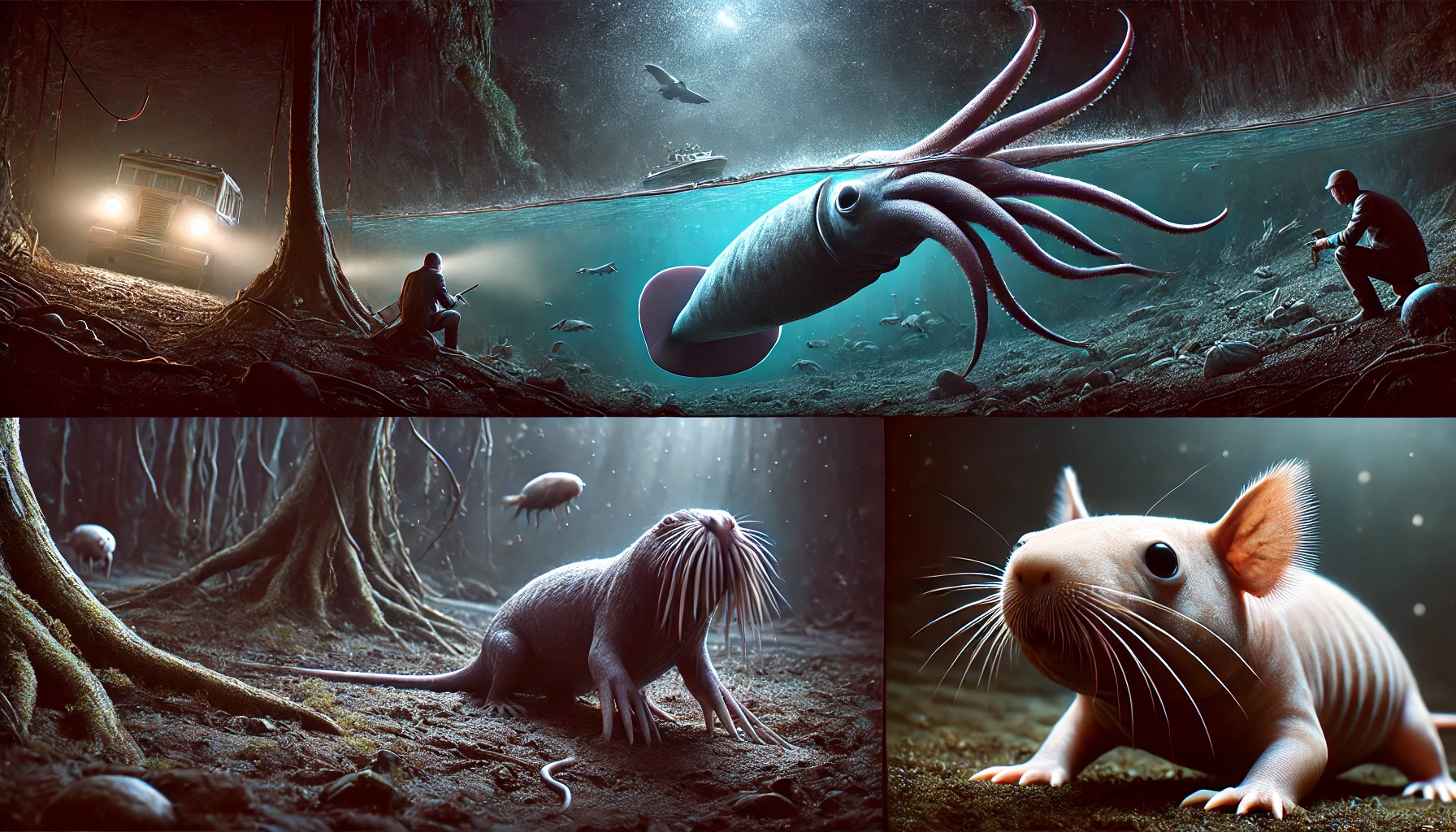In the vast expanse of Earth’s biodiversity, certain creatures defy our understanding and push the boundaries of what we know about life. These mysterious animals, with their peculiar features and behaviors, continue to puzzle scientists and spark the curiosity of the public. Here’s a look at some of the most enigmatic creatures that remain scientific enigmas.
Colossal Squid: The Deep-Sea Giant
The colossal squid is perhaps the most elusive of all ocean dwellers. Known to inhabit the deep, cold waters of the Southern Ocean, this squid can grow up to 46 feet in length, making it one of the largest known invertebrates. Its eyes, the size of dinner plates, and equipped with rotating hooks on its tentacles, the colossal squid is a true behemoth whose life remains largely a mystery due to its inaccessible habitat. Truly, it is one of the more mysterious animals of the sea.
Star-Nosed Mole: A Sensor Beyond Compare
The star-nosed mole is easily recognizable by its unique star-shaped nose, which is not just for show. This organ is one of the most sensitive tactile sensors in the animal kingdom, with more than 100,000 nerve endings that allow it to detect seismic wave vibrations and navigate through its underground world. Despite extensive studies, the full range of this mole’s sensory capabilities is still not fully understood. It’s truly one of the planet’s mysterious animals.
Axolotl: The Forever Young
The axolotl, a type of salamander native to Mexico, is famous for its ability to regenerate lost body parts, a trait that has made it a subject of intense scientific study. Unlike other vertebrates, the axolotl can regrow complex structures such as limbs, spinal tissue, and even parts of its brain without scarring. This regenerative power, combined with its perpetual juvenile state, makes the axolotl a biological wonder that could hold the secrets to cellular regeneration in humans. Indeed, it’s one of the world’s most mysterious animals.
Conservation Challenges
The mystery surrounding these animals is compounded by the threats they face from habitat loss, pollution, and climate change. Befriending these mysterious animals’ habitats and studying them in their natural environments are crucial for understanding their complex biology and ecological importance.
Conclusion
These mysterious animals are just a glimpse into the vast unknowns that still exist in the natural world. Each species not only challenges our understanding of biology and ecology but also reminds us of the endless mysteries waiting to be discovered. As science advances, perhaps the secrets of these enigmatic creatures will one day be unlocked.

